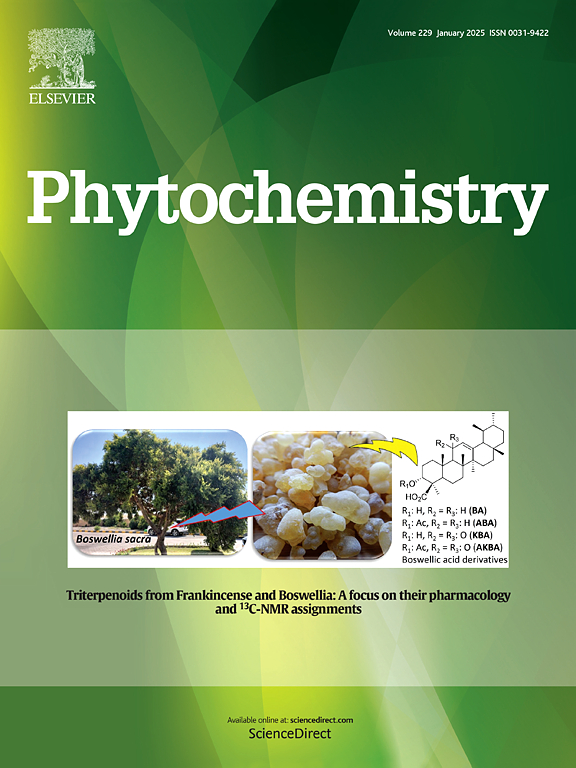Discovery of a previously undescribed immunopotentiator: identification and immune-stimulating activity of saponins from Hylomecon japonica (Thunb.) Prantl & Kündig
IF 3.4
2区 生物学
Q2 BIOCHEMISTRY & MOLECULAR BIOLOGY
引用次数: 0
Abstract
The total saponins from Hylomecon japonica (Thunb.) Prantl & Kündig were found to exhibit significant immune-stimulating activity. This finding prompted the bioassay-guided isolation of six previously undescribed saponins (1–6) from the herb. Their chemical structures were unambiguously determined through comprehensive spectroscopic data analysis. Initial screening revealed that compounds 1–3 did not exhibit cytotoxic effects on splenic lymphocytes in vitro, and compound 2 demonstrated significant proliferative activity. Further, flow cytometry analysis showed that compound 2 significantly increased the expression levels of CD80, CD86, and MHC II on the surface of bone marrow-derived dendritic cells (BMDCs), suggesting its potential to promote BMDCs maturation. Moreover, ELISA and RT-qPCR assays indicated that compound 2 enhanced the production of immune cytokines IFN-γ, IL-2, and TNF-α, and upregulated the expression of immune-related genes IFN-γ, NF-κB, and TLR4 in BMDCs. Additionally, mixed lymphocyte reaction (MLR) experiments confirmed that compound 2 amplified the T cell-mediated immune response facilitated by BMDCs. These findings establish a fundamental basis for investigating immune-enhancing effect of triterpenoids.

一种先前未被描述的免疫增强剂的发现:海苔皂苷的鉴定和免疫刺激活性。Prantl & k ndig。
海参总皂苷(Hylomecon japonica)发现Prantl & k ndig具有显著的免疫刺激活性。这一发现促使生物测定指导下从该草药中分离出10种三萜皂苷,包括6种以前未描述的皂苷(1-6)和4种已知的皂苷(7-10)。通过全面的光谱数据分析,确定了它们的化学结构。初步筛选表明,化合物1-3对体外脾淋巴细胞无细胞毒作用,而化合物2具有显著的增殖活性。此外,流式细胞术分析显示,化合物2显著提高了骨髓源性树突状细胞(bmdc)表面CD80、CD86和MHC II的表达水平,提示其促进bmdc成熟的潜力。此外,ELISA和RT-qPCR检测表明,化合物2可增强BMDCs中免疫细胞因子IFN-γ、IL-2和TNF-α的产生,上调免疫相关基因IFN-γ、NF-κB和TLR4的表达。此外,混合淋巴细胞反应(MLR)实验证实,化合物2增强了BMDCs促进的T细胞介导的免疫应答。这些发现为进一步研究三萜类化合物的免疫增强作用奠定了基础。
本文章由计算机程序翻译,如有差异,请以英文原文为准。
求助全文
约1分钟内获得全文
求助全文
来源期刊

Phytochemistry
生物-植物科学
CiteScore
6.40
自引率
7.90%
发文量
443
审稿时长
39 days
期刊介绍:
Phytochemistry is a leading international journal publishing studies of plant chemistry, biochemistry, molecular biology and genetics, structure and bioactivities of phytochemicals, including ''-omics'' and bioinformatics/computational biology approaches. Phytochemistry is a primary source for papers dealing with phytochemicals, especially reports concerning their biosynthesis, regulation, and biological properties both in planta and as bioactive principles. Articles are published online as soon as possible as Articles-in-Press and in 12 volumes per year. Occasional topic-focussed special issues are published composed of papers from invited authors.
 求助内容:
求助内容: 应助结果提醒方式:
应助结果提醒方式:


